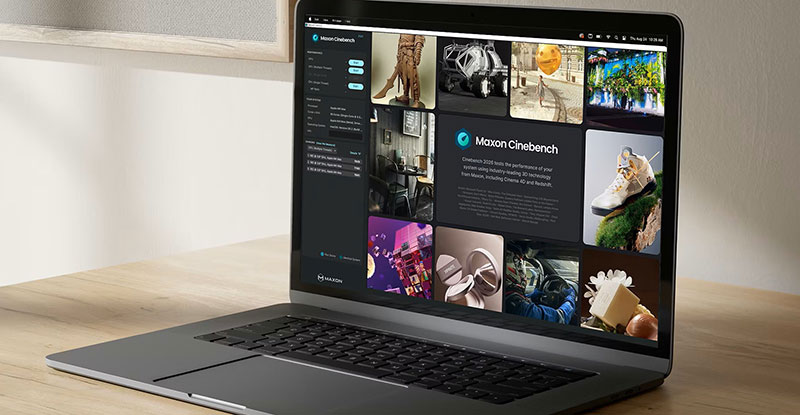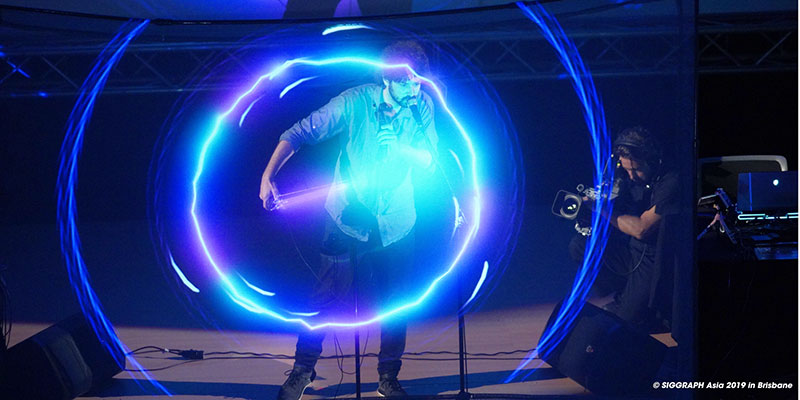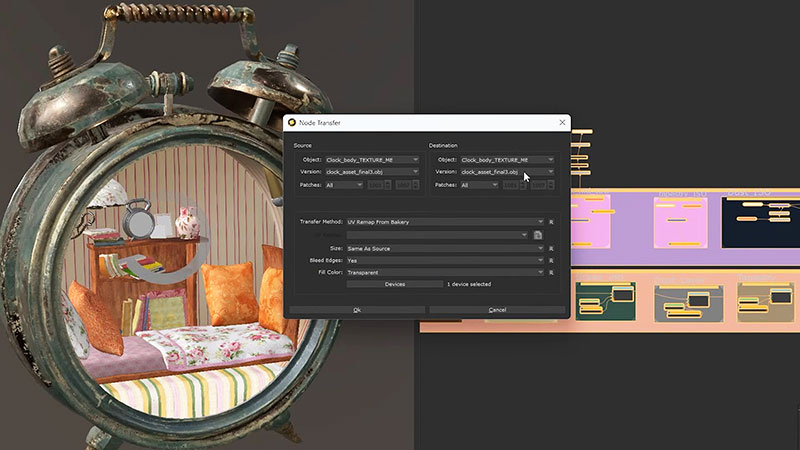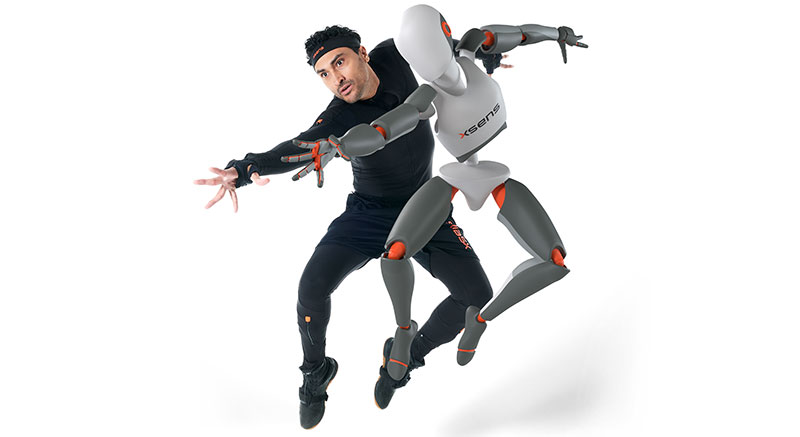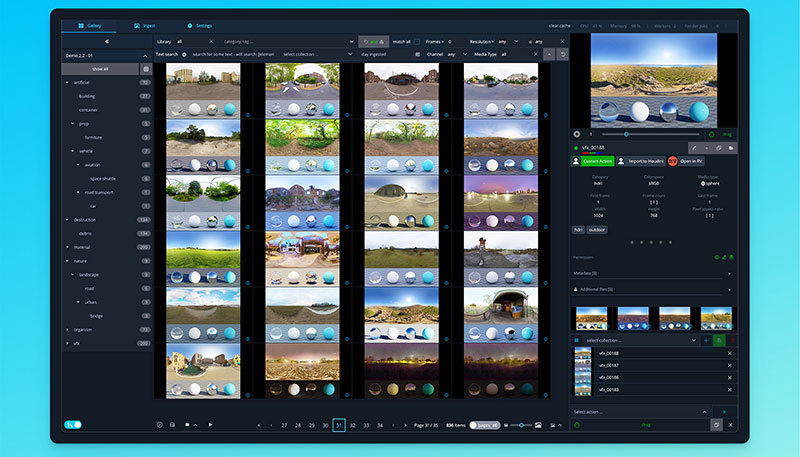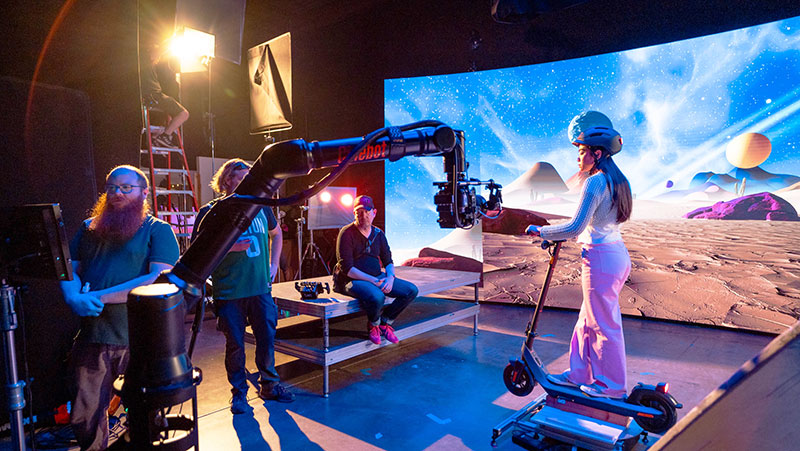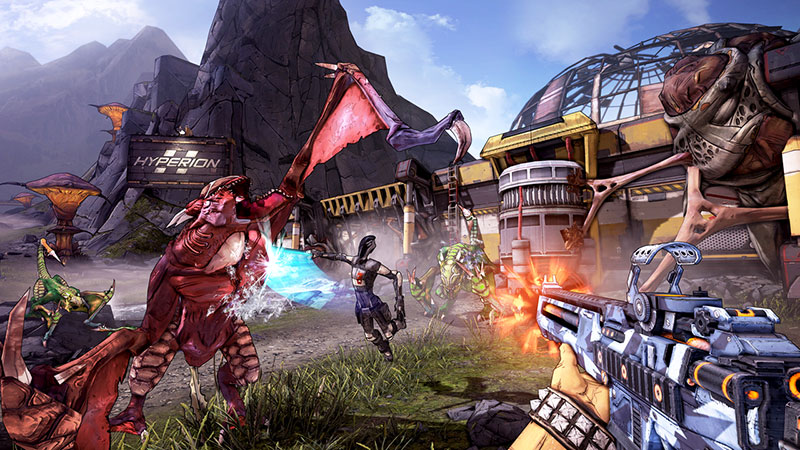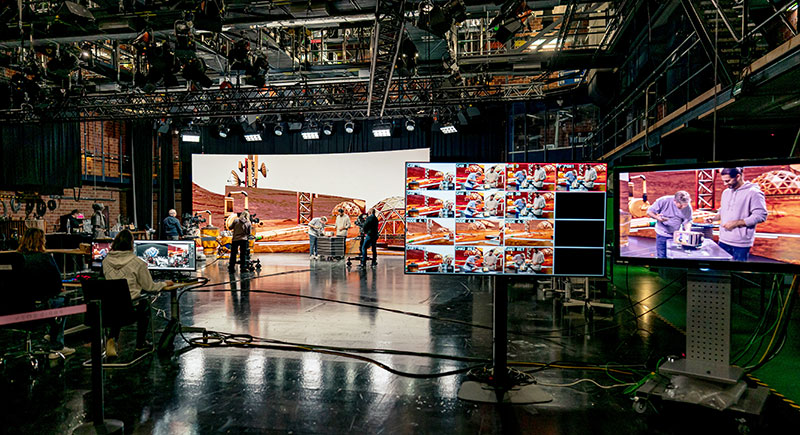Updates to Autodesk Maya, 3ds Max, Bifrost and Arnold make further use of open standards, and support artist-driven animation, modelling and simulation workflows.
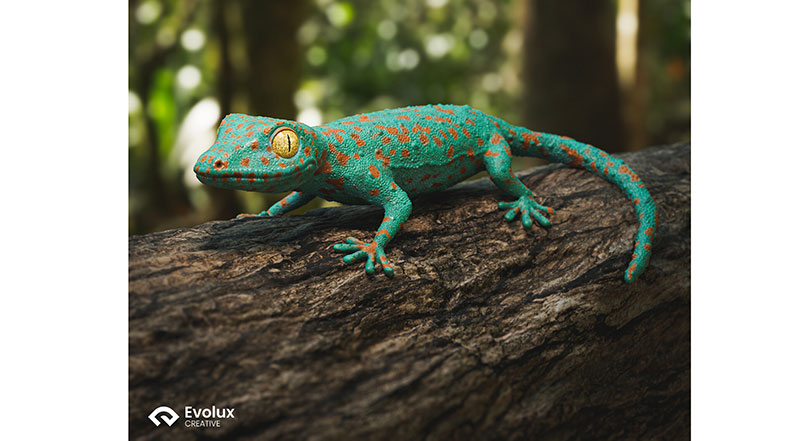
Updates to Autodesk Maya, 3ds Max, Bifrost and Arnold make further use of open standards and support artist-driven animation, modelling and simulation workflows. Autodesk are also collaborating with Adobe to build a material standard, and with Microsoft to develop a beta version of AI-powered Maya Assist. Users can increase performance with support for Apple Silicon.
Diana Colella, senior vice president, Autodesk Media & Entertainment, said that integrating open standards like USD, LookDevX and OCIO across the tools will build deeper connections between Autodesk’s software and third party applications, intended to help design connected workflows for better collaboration.
Open Standards for Materials and USD Workflows
Among the open standards integrations, LookdevX is an agnostic material editor for standardised, portable material workflows, and for accurately sharing materials throughout a pipeline. Designed and engineered as an Open Render plugin, the LookdevX graph currently supports material editing and authoring of USDshade graphs, MaterialX and Arnold graphs, giving users the flexibility to use various material libraries. Nodes are clearly illustrated using dedicated icons and prefixes on node types.
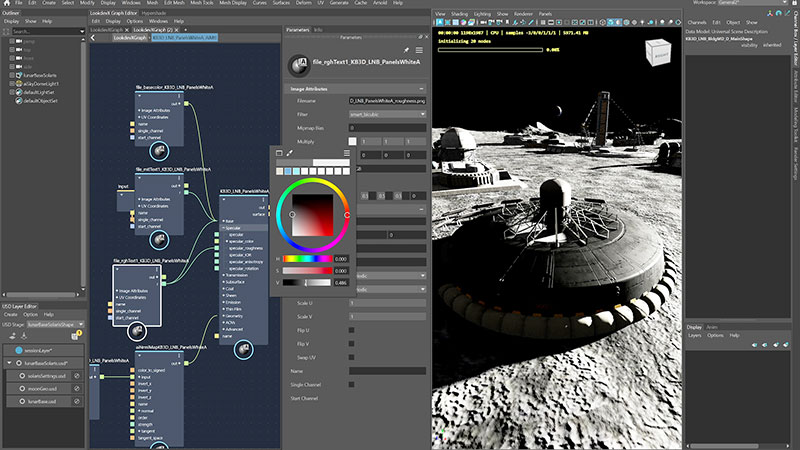
LookdevX is also a comprehensive material authoring workflow enabling creative expression, look development artists can experiment with complex shading networks that other artists can use further down the pipeline. You can control minimum and maximum attribute range, customise the UI or selectively hide ports.
Autodesk continues to integrate USD workflows across their applications in order to ease the movement of data through the post-production pipeline. The Outliner has been enhanced to work in a comprehensive material workflow, and the Outliner and LookdevX now support the assignment and removal of USD materials to one or more selected Prims in the USD stage.
You can create new materials under the ‘mtl’ scope list. When performing direct material assignment, materials are created under a standardised or user-defined material scope name. USD materials can then be sent from the Viewport and Outliner to LookdevX for further adjustments.
3ds Max - Modelling and Colour Management Updates
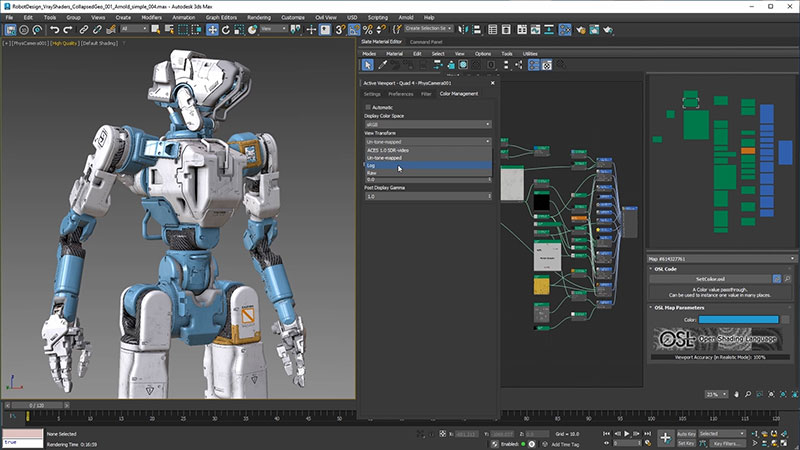
A new Boolean modifier serves as an updated way to produce clean geometry and manipulate mesh output faster. This includes a new Boolean operand called Split, and Mesh and VDB-based Boolean operations.
Updates to the Array modifier help create beautiful, natural looking scenes, procedurally. Material IDs may be assigned to mesh data on a per-face and per-element basis using new methods like random, ordered, first, middle, and last.
With colour management tools built around the Academy Color Encoding System ACES and OpenColorIO OCIO, considered necessary for most modern post-production pipelines, this update features comprehensive Color Management. From Viewport to final render, colours are predictable and consistent, and will match and align at each production stage.
Animation capabilities are enhanced with a Transform List Controller. The Transform List allows multiple Transform controllers to be added to an object as layers of blended animation data. You can now refine and iterate on the animation through unique data for each layer and control how and when the layers of data should blend together.
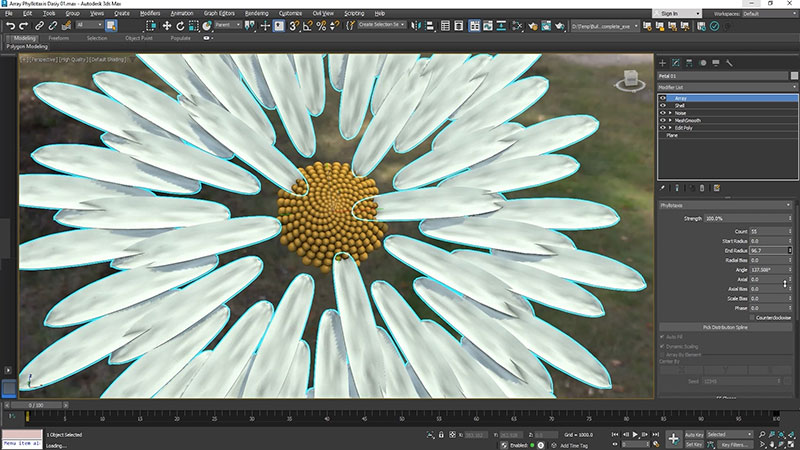
Array modifier
Motion Paths now support a larger set of position controllers giving animators broader support to manipulate animation data directly in the viewport.
Maya – New Animation, Modelling and Simulation Workflows
Hydra for Maya enables you to use Pixar's Hydra rendering framework as a viewport inside of Maya. This open source plugin is part of the USD for Maya. With Storm rendering, you are using Hydra's primary rasterization render engine which is highly scalable, multi-pass and includes OpenSubdiv mesh rendering support. The render delegate system also gives the ability to use the renderer of choice.
Updates to Retopologize include feature preservation, preserving hard edges, edges by angle and user-defined edge Component Tags during the Retopologize process. New options allow you to maintain specific areas of detail on an input mesh, and control the edge flow of a retopologized output mesh. New symmetry support retopologizes meshes that require symmetrical topology using controls for axis and direction and taking into account world and object space. A new option called ‘Scan input mesh for issues’ alerts you to potential mesh challenges.
Improvements to the Boolean toolset give modellers more control when adding and editing new input objects in the Boolean Stack. A new Interactive Update option is a way to improve boolean performance while working with complex dense meshes.
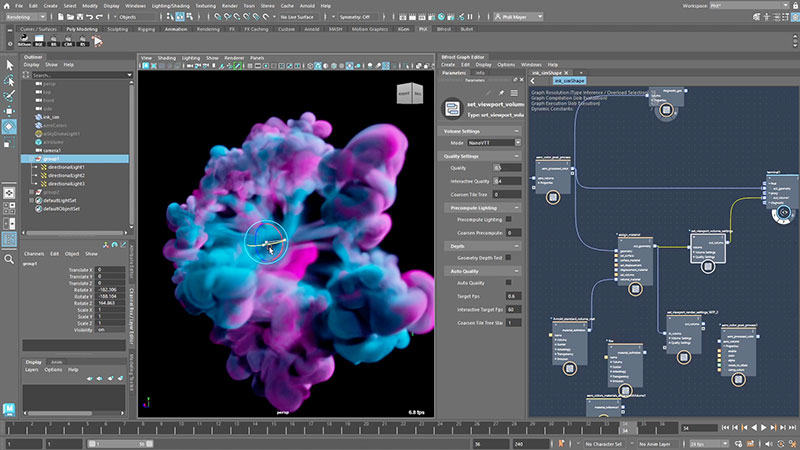
Bifrost NanoVTT viewport volume rendering
New types of animation tools, including a redesigned Time Slider, make navigating and editing animations more fluid and intuitive. Improvements are made to key, waveform and bookmark display, with interaction modes for moving and scaling keyframes, and setting time ranges. Users will be able to navigate and manipulate the timeline and edit animations directly in the Time Slider. New brush-based curve editing tools in the Graph Editor shape groups of keys, and new key and curve editing features are added for quickly modifying the time or value of selected keys.
Bifrost, Maya’s visual programming environment, now has a specialised viewport volume rendering system to support Bifrost’s volume representation, NanoVTT viewport volume rendering. It supports Bifrost’s volume representation, the volume tile tree (VTT), which includes a new GPU-native volume format based on NanoVDB.
Volumes in the viewport more closely match Arnold renders by supporting more of Arnold’s features. Volumes with voxel colours render in the viewport, and fire and explosions can take advantage of physically based thermodynamic emission scaling, for instance. Volumes now render with an alpha channel in the viewport as well, useful for producing playblasts that can be composited.
MPM Gel is a new capability that simulates substances such as soft-serve ice cream, cake icing, toothpaste, ketchup, melted chocolate, foam and other nice things. It is customisable using physical properties such as yield stress, and responds to influences and fields.
Maya – including Bifrost and Arnold for Maya – now runs natively on Apple Silicon, enabling artists to achieve greater performance while rendering.
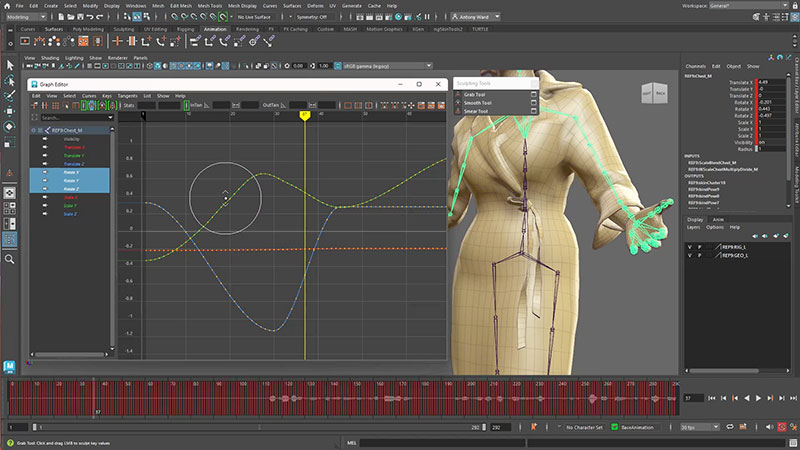
Animation curve brushes
AI-assisted Workflows in Maya
An AI-powered private beta of Maya Assist is indevelopment, and will serve as a new way to interact with Maya scene data using Microsoft’s Azure OpenAI Service. This allows artists to automatically manipulate scenes using natural language text prompts directly in Maya. For example, you can ask to copy an object, increase its size by 25 percent, or add a camera and aim it anywhere. The private beta launches on 5 April. To apply, click here.
Adobe Collaboration - Open Source Material Model
With the goal of standardising material workflows and improving interoperability across the tools artists use, Autodesk Standard Surface and Adobe Standard Material will soon be brought into one new material model that can be used across product lines and adopted by the wider industry.
Having a common material model will help artists and studios work more efficiently by facilitating the direct exchange of 3D assets. Autodesk is engaging with the MaterialX governance group to ensure that the new model can be integrated and fully encoded within a MaterialX node graph. www.autodesk.com


